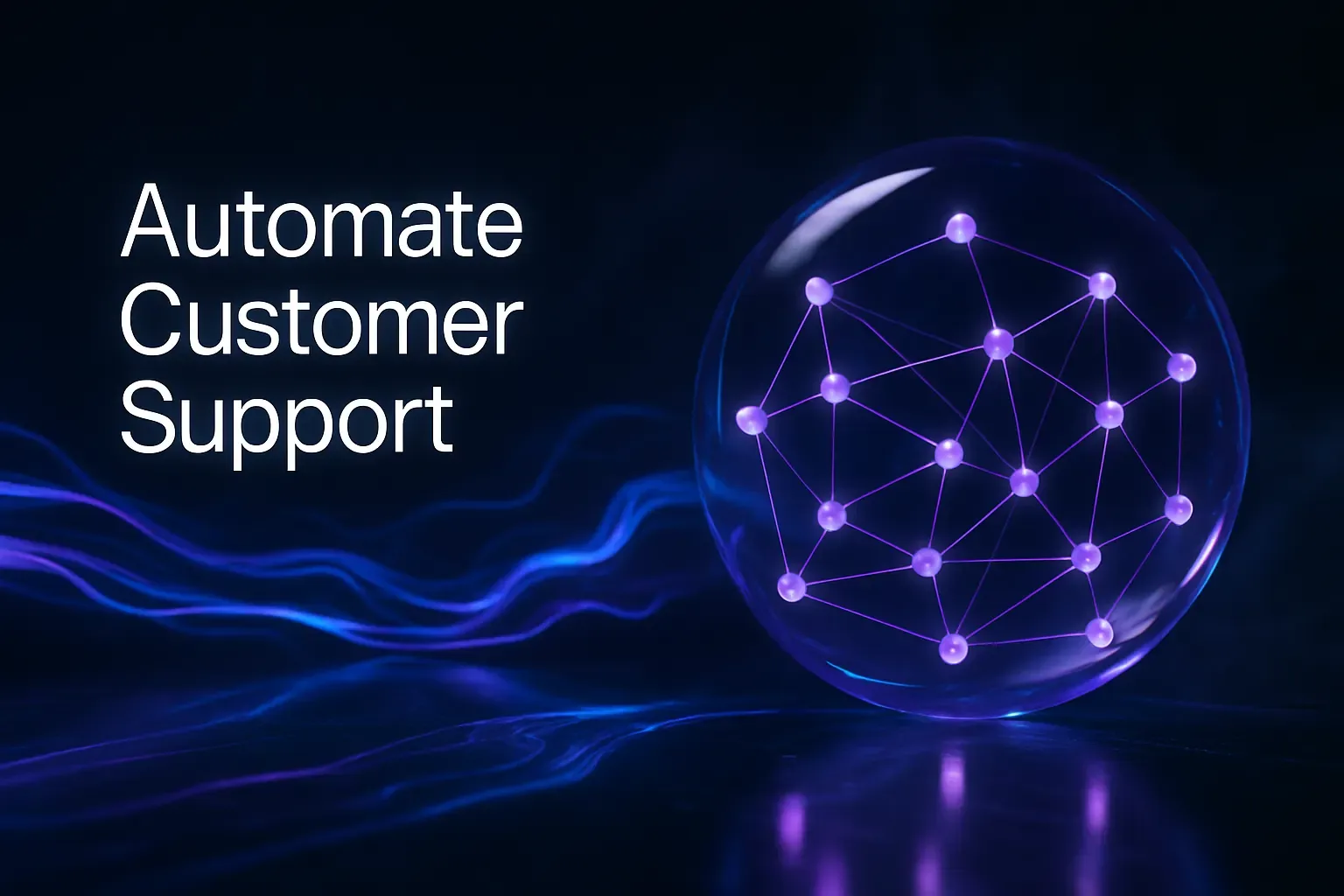Churn speaks softly before it shouts
Customers rarely leave without early signs. Their intentions show up across support tickets, chats, and how they interact with your product. AI can identify these early signals at scale, spotting sources of frustration and disengagement well before a customer decides to leave.
This early detection empowers you to take meaningful action based on context. It’s a chance to address the underlying issues, not just resolve surface-level complaints.
Transition from reacting to complaints, to proactively solving problems
Many teams only act once a customer submits a complaint. By then, patience is already low. With AI integrated into your operations, you can identify risks earlier. AI monitors customer sentiment, intent, and behavior patterns across your communication channels. It highlights which accounts may be feeling stuck or ignored, allowing you to act sooner.
- Reach out proactively when negative sentiment appears in two or more customer interactions.
- Automatically provide a tailored guide when customers repeatedly struggle with a feature.
- Alert a customer success manager if product usage drops from one week to the next.
- Initiate a friendly follow-up if a service-level agreement (SLA) is missed.
The signals that predict churn
Customer retention often depends on subtle details, and AI helps you spot them.
- Sentiment trends: Watch for consistent negative shifts, not just isolated complaints.
- Repetition: Identify repeated questions from the same customer across different channels.
- Escalation loops: Spot situations where issues are handed off multiple times and remain unresolved.
- Usage decay: Detect when active users or usage frequency drop without clear reasons.
- Billing friction: Notice failed payments or early signs of downgrades.
- Topic spikes: Respond quickly when a bug or user experience change generates many new inquiries.
Retention starts with attention.Offer timely, specific assistance to resolve obstacles quickly.
Playbooks that act in time
Triage with context
Make sure high-risk situations go to the right person. Provide a snapshot of the customer’s timeline, key messages, and their importance to your business. Give customer-facing agents a full, informed picture, more than just a ticket.
Retention efforts that respect customer value
- Connect the customer with an expert before considering discounts.
- Offer a focused plan for success with clear outcomes.
- Send concise, step-by-step solutions tailored to the obstacle at hand.
Close the loop
Identify the root cause, fix it at the source, and update the customer. Celebrate successful turnarounds internally, and turn new insights into better policies for the future.
Where AI fits in your operational workflow
Your operational workflow should integrate customer support, product experience, and customer success. AI should be incorporated into this workflow, as opposed to being an isolated, parallel process. AI can classify customer intent, draft responses using your preferred style, and assess risks at an account level. AI-generated insights should be shared directly with your CRM to ensure the entire team benefits.
For a detailed example of integrating AI into these processes, explore this practical guide on building an AI-powered customer success stack. Map these components to your existing tools, then start by focusing on one high-impact area to test and refine.
Choosing a platform for retention
There are many customer retention tools on the market. Prioritize tools that fit your organization’s workflow needs, language quality, and privacy requirements, rather than just the most well-known brands.
- Intercom: Offers a robust messaging platform, effective bots, and an extensive range of integrations. Ideal for companies with a chat-based support strategy.
- Typewise: Focuses on privacy and seamless communication within your CRM, email, and chat tools. It can be customized to communicate using your company’s unique voice and messaging, helping reduce response times without risking sensitive data.
- Zendesk: Well-established ticket management and workflow automation on an enterprise scale. Suited to organizations that standardize on Zendesk’s systems.
- Salesforce Service: Delivers deep CRM context and analytics, a strong option if your organization’s data is housed in Salesforce.
Test any potential solution using real support cases. Evaluate improvements in response time, tone consistency, and how often at-risk accounts are saved.
Drafts that keep customers, not just close tickets
When a relationship is at risk, the quality of your communication matters. AI can guide your support team to use the right tone and structure, ensuring each reply is effective and empathetic. Be concise. Show understanding. Propose a clear next step.
- Restate the customer’s main goal as you understand it.
- Make reference to their specific challenge, using their own wording when possible.
- Recommend one clear solution or path, rather than overwhelming them with options.
- Clarify who will follow up and when they can expect an update.
Typewise focuses on improving grammar, clarity, and phrasing, all within the tools your team uses daily. This leads to faster, better-aligned responses and fewer rewrites.
Measure the save, not just the response rate
Go beyond tracking activity, focus on outcomes. What matters is reducing reasons for customer churn and achieving more positive interactions. Link your monitoring efforts to key business metrics like revenue and customer loyalty.
- Save rate: The percentage of accounts at risk that successfully renew.
- Time to insight: How quickly your team detects at-risk situations.
- Time to next value: The time from identifying an issue to when the customer next finds value in your product.
- Quality consistency: Ensuring tone and clarity are steady across different team members.
Review the effectiveness of your measures weekly. Share both the successes and failures. Update the response strategy, then refine the AI intelligence with new data and examples from recent interactions.
Implement in 30 days
- Week 1: Identify specific churn signals relevant to your business and gather recent examples from support interactions. Choose a target customer segment to start with.
- Week 2: Integrate your CRM, support platform, and product analytics. Validate risk scoring models using recent customer cases.
- Week 3: Launch two targeted action plans: one for customers struggling with product confusion, and one for those showing declining engagement.
- Week 4: Assess early outcomes. Continue with strategies that show results, discontinue ineffective ones, and plan your next improvements.
Maintain focused goals. Showcase the value of your efforts to customers as soon as possible, and build on your successes confidently.
Privacy, tone, and trust
Retaining customers is built on trust. Customers reveal both problems and aspirations in support conversations, and it’s essential to treat their data responsibly. Choose technology partners who prioritize privacy and align with your company’s data policies.
Typewise prioritizes privacy and can be customized to communicate using your company’s unique voice and messaging. It integrates with your CRM, email, and chat, so your workflows remain seamless. As a result, your team responds faster and your customers feel genuinely heard.
Final thought
Churn rarely happens unexpectedly. By focusing on early warning signals and timely interventions, you can retain more customers and address underlying issues before they lead to loss.
Want to see how this approach can work in your organization? Learn how Typewise supports proactive retention and brand-aligned communication. Start a conversation at typewise.app.
FAQ
How can AI detect early signs of customer churn?
AI analyzes patterns in customer interactions, such as sentiment, frequency, and behavior, to identify disengagement signals. Ignoring these subtle clues can lead to preventable loss, as churn doesn't occur in isolation.
Why is it crucial to act before customers file complaints?
By the time complaints surface, dissatisfaction may have already deepened beyond repair. Addressing issues proactively can prevent escalation and costly retention efforts later.
What are 'usage decay' and its implications for churn?
'Usage decay' reflects a decrease in user activity without a clear cause, signaling potential disinterest. Ignoring this indicates complacency, risking amplified churn rates as active users silently disengage.
How does AI improve communication with at-risk customers?
AI refines tone and delivery to maintain consistency and empathy in responses. Overlooking this risks alienating users with robotic, generic communications that fail to address core issues.
What metrics beyond response rate should be monitored for churn prevention?
Focus should be on 'save rate' and 'time to insight', which provide a clearer picture of retention efforts' effectiveness. Solely tracking response speed is superficial, ignoring the outcomes that truly matter.
Why is integrating AI into existing workflows crucial?
Standalone AI solutions create data silos, leading to inefficient operations and misalignment across teams. Integrating AI ensures cohesive insights that drive meaningful retention actions.
What role does privacy play in customer retention efforts?
Privacy is foundational; mishandled data breaches trust and jeopardizes retention efforts. Prioritizing secure communication channels is non-negotiable in building and sustaining customer loyalty.





